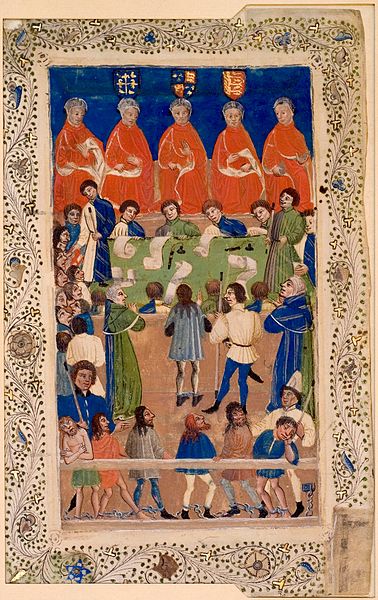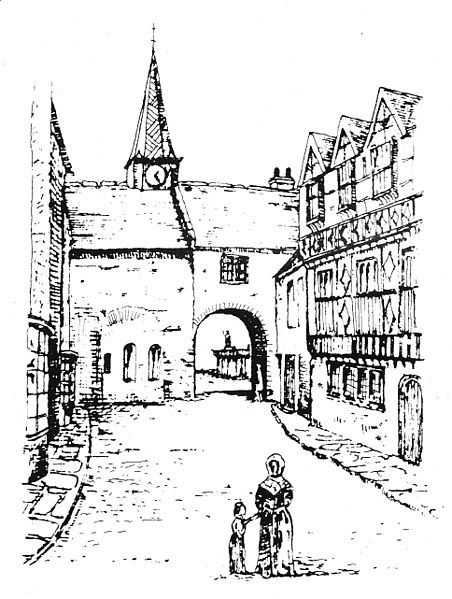Sir John Doddridge was an English lawyer, appointed Justice of the King's Bench in 1612 and served as Member of Parliament for Barnstaple in 1589 and for Horsham in 1604. He was also an antiquarian and writer. He acquired the nickname "the sleeping judge" from his habit of shutting his eyes while listening intently to a case. As a lawyer he was influenced by humanist ideas, and was familiar with the ideas of Aristotle, and the debates of the period between his followers and the Ramists. He was a believer in both the rationality of the English common law and in its connection with custom.
He was one of the Worthies of Devon of the biographer John Prince (d.1723).
Sir John Doddridge (1555–1628), Justice of the King's Bench, wearing his judicial robes. National Portrait Gallery.
The 16th-century "Doddridge House" (right) in Cross Street, Barnstaple. 19th-century engraving by Jonathan Lomas, looking down Cross Street toward the West Gate.
Great Fosters, near Egham, Surrey, Doddridge's seat near London at which he died in 1628, as stated on his epitaph in Exeter Cathedral
Effigy of Dorothy Bampfield, Dodderidge's second wife, Exeter Cathedral
Justice of the King's Bench
Justice of the King's Bench, or Justice of the Queen's Bench during the reign of a female monarch, was a puisne judicial position within the Court of King's Bench, under the Chief Justice. The King's Bench was a court of common law which modern academics argue was founded independently in 1234, having previously been part of the curia regis. The court became a key part of the Westminster courts, along with the Exchequer of Pleas and the Court of Common Pleas ; the latter was deliberately stripped of its jurisdiction by the King's Bench and Exchequer, through the Bill of Middlesex and Writ of Quominus respectively. As a result, the courts jockeyed for power. In 1828 Henry Brougham, a Member of Parliament, complained in Parliament that as long as there were three courts unevenness was inevitable, saying that "It is not in the power of the courts, even if all were monopolies and other restrictions done away, to distribute business equally, as long as suitors are left free to choose their own tribunal", and that there would always be a favourite court, which would therefore attract the best lawyers and judges and entrench its position. The outcome was the Supreme Court of Judicature Act 1873, under which all the central courts were made part of a single Supreme Court of Judicature. Eventually the government created a High Court of Justice under Lord Coleridge by an Order in Council of 16 December 1880. At this point, the King's Bench formally ceased to exist.

The Justices of the King's Bench at work. This illuminated manuscript from about 1460 is the earliest known depiction of the English court.





